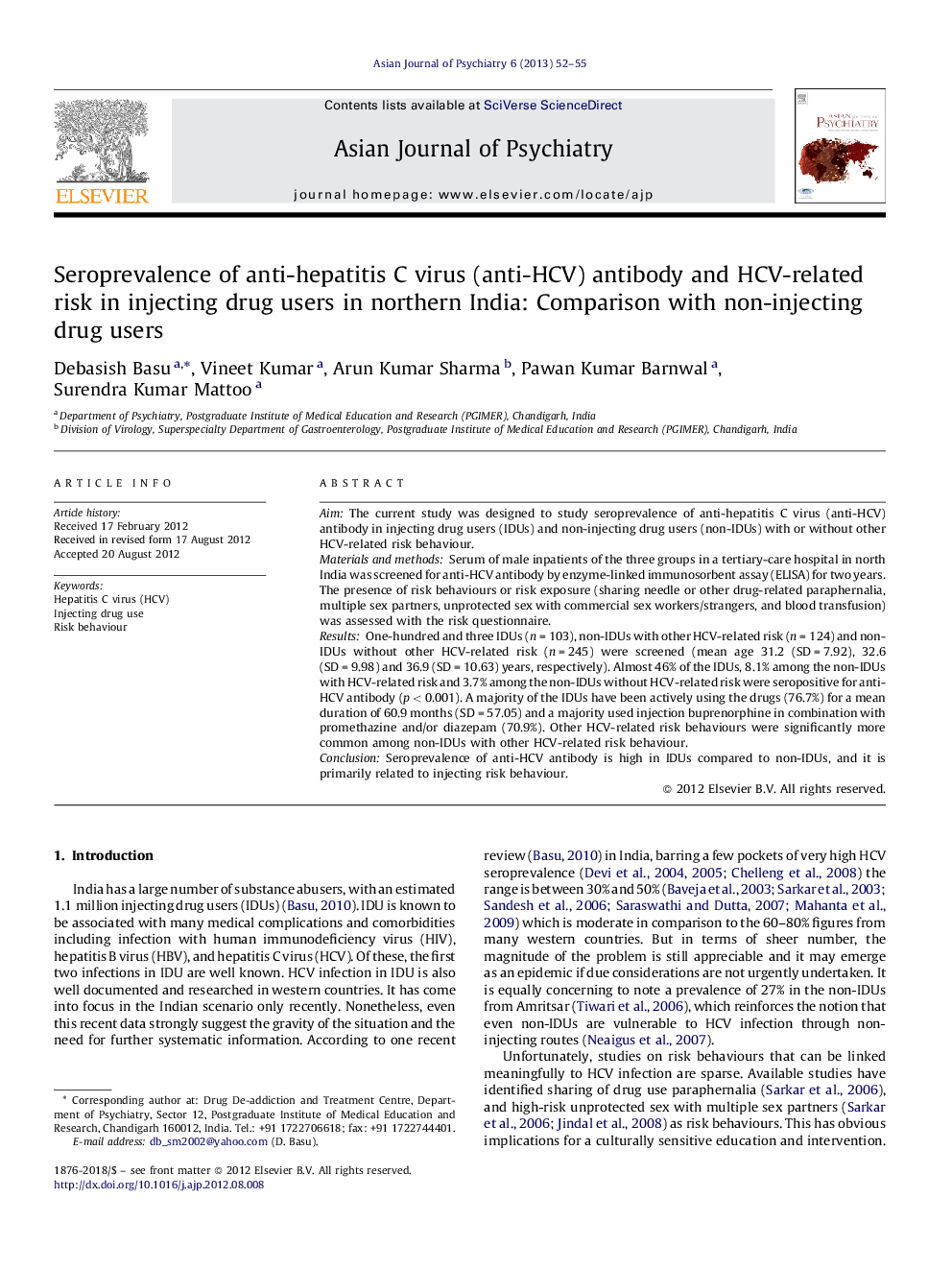| Article ID | Journal | Published Year | Pages | File Type |
|---|---|---|---|---|
| 315533 | Asian Journal of Psychiatry | 2013 | 4 Pages |
AimThe current study was designed to study seroprevalence of anti-hepatitis C virus (anti-HCV) antibody in injecting drug users (IDUs) and non-injecting drug users (non-IDUs) with or without other HCV-related risk behaviour.Materials and methodsSerum of male inpatients of the three groups in a tertiary-care hospital in north India was screened for anti-HCV antibody by enzyme-linked immunosorbent assay (ELISA) for two years. The presence of risk behaviours or risk exposure (sharing needle or other drug-related paraphernalia, multiple sex partners, unprotected sex with commercial sex workers/strangers, and blood transfusion) was assessed with the risk questionnaire.ResultsOne-hundred and three IDUs (n = 103), non-IDUs with other HCV-related risk (n = 124) and non-IDUs without other HCV-related risk (n = 245) were screened (mean age 31.2 (SD = 7.92), 32.6 (SD = 9.98) and 36.9 (SD = 10.63) years, respectively). Almost 46% of the IDUs, 8.1% among the non-IDUs with HCV-related risk and 3.7% among the non-IDUs without HCV-related risk were seropositive for anti-HCV antibody (p < 0.001). A majority of the IDUs have been actively using the drugs (76.7%) for a mean duration of 60.9 months (SD = 57.05) and a majority used injection buprenorphine in combination with promethazine and/or diazepam (70.9%). Other HCV-related risk behaviours were significantly more common among non-IDUs with other HCV-related risk behaviour.ConclusionSeroprevalence of anti-HCV antibody is high in IDUs compared to non-IDUs, and it is primarily related to injecting risk behaviour.
► Anti-hepatitis C virus (anti-HCV) antibody was detected by ELISA method in 45.6% of injecting drug users (IDUs) attending a regional de-addiction centre in north India. ► In contrast, seroprevalence of anti-HCV antibody was only 5.1% in non injecting drug users (non-IDUs) at the same centre. ► Non-IDUs with other (mostly sex-related) risk behaviour had higher seropositivity of anti-HCV antibody compared to non-IDUs who did not have such risk (8.1% vs. 3.7%, respectively). ► Sharing and repeat use of drug-related paraphernalia and (to a lesser extent) risky sexual behaviour were significantly associated with seropositivity in IDUs. ► Given the baseline community seroprevalence of anti-HCV antibody as around 1–2%, our results raise concern and call for urgent medical, public health and policy-making attention in this area.
